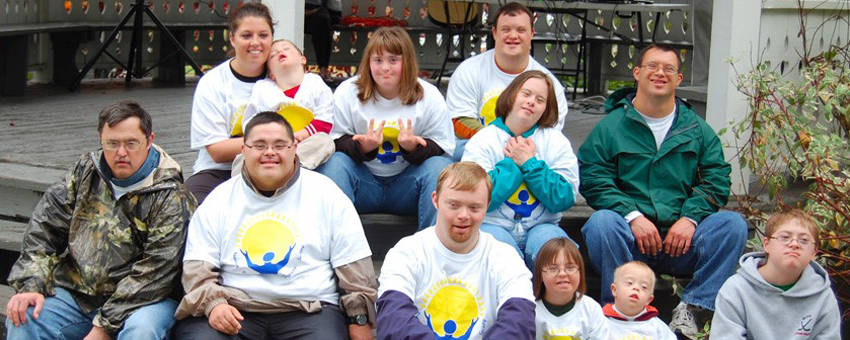
It is vital to speak about issues relating to Down’s syndrome in a way that is both factually accurate and inoffensive to people with Down’s syndrome, their families, carers and the people who support them.
We are sure you share our concerns so please take a minute to read the following language guidelines to ensure that you are not perpetuating any myths about the condition.
People with Down’s syndrome are all unique individuals and should be acknowledged as a person first and foremost. Down’s syndrome is only a part of the person; they should never be referred to as “a Down’s” or “a Down’s person”.
| Don’t Say | Do Say |
| suffers from OR is a victim of Down’s syndrome | has Down’s syndrome |
| a Down’s baby/person/child | a person/baby/child with Down’s syndrome or who has Down’s syndrome. People with Down’s syndrome are all unique individuals and should be acknowledged as a person first and foremost. It is important to think of the person first, e.g. John is 29 and has Down’s syndrome. |
| retarded/mentally handicapped/backward/mental disability | learning disability |
| disease/illness/handicap | condition OR genetic condition |
| the risk of a baby having Down’s syndrome (in relation to pre-natal screening and probability assessments) | the chance of a baby having Down’s syndrome |
| Myths | Facts |
| People with Down’s syndrome don’t live very long. | Today, people with Down’s syndrome are living into their 50s and 60s with a small number living into their 70s and beyond |
| Only older mothers have babies with Down’s syndrome. | Although older mothers have a higher individual chance of having a baby with Down’s syndrome, more are born to younger mothers, reflecting the higher birth rate in this group. |
| People with Down’s syndrome cannot achieve normal life goals. | With the right support, they can. Small but increasing numbers of people with Down’s syndrome are leaving home and living with support in their communities. They are , gaining employment, meeting partners and getting the best out of life. |
| People with Down’s syndrome all look the same. | There are certain physical characteristics that can occur. Each person will have a number of the more common physical characteristics. A person with Down’s syndrome will always look more like his or her close family than someone else with the condition. |
| People with Down’s syndrome are always happy and affectionate. | We are all individuals and people with Down’s syndrome are no different to anyone else in their character traits and varying moods. |
Down’s syndrome or Down syndrome?
It is generally accepted that both Down’s syndrome and Down syndrome can be used interchangeably. For us at the Down’s Syndrome Association, the most important thing is the use of person first terminology (e.g. “person with Down’s syndrome “, not “Down’s syndrome person“).
Source: All rights reserved to Down's Syndrome Association https://www.downs-syndrome.org.uk/about/terminology-guide